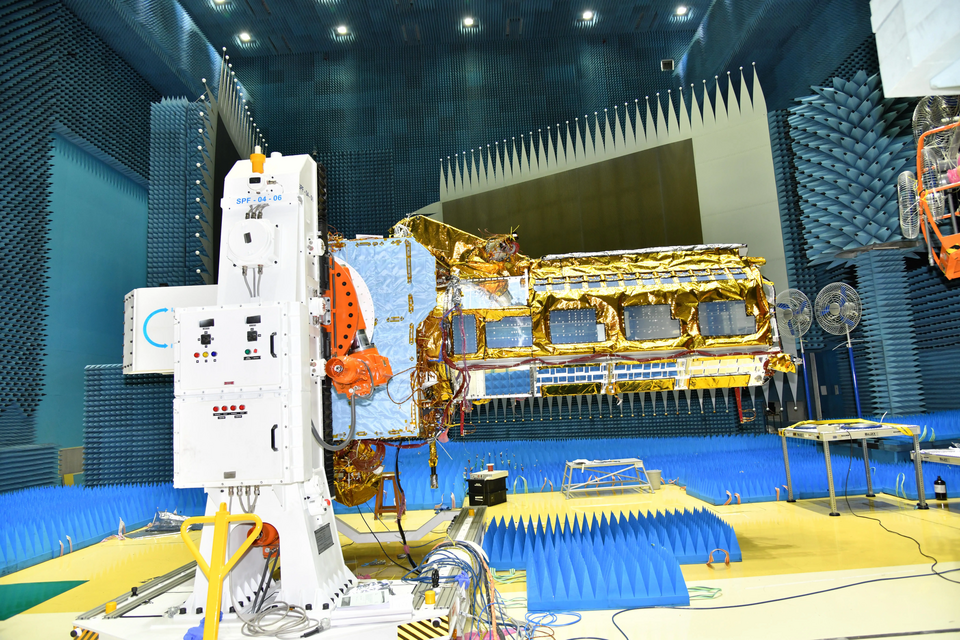NASA and ISRO Join Forces for Revolutionary Earth-Observing Mission

NASA and the Indian Space Research Organisation (ISRO) are set to unveil the NISAR (NASA-ISRO Synthetic Aperture Radar) satellite, a groundbreaking collaboration aimed at revolutionizing Earth observation. This mission, which will provide a three-dimensional view of the planet with unprecedented detail, is scheduled for launch on July 21, 2025, from the Satish Dhawan Space Centre in Sriharikota, India.
The NISAR satellite will utilize advanced synthetic aperture radar technology to monitor nearly all of the Earth’s land and ice-covered surfaces every 12 days. This capability is crucial for enhancing our understanding of natural hazards and environmental changes, offering insights that can aid in disaster response and management. According to Nicky Fox, associate administrator for NASA's Science Mission Directorate, "NISAR represents a significant advancement in our ability to monitor the planet's dynamic processes and respond to environmental challenges."
The satellite is equipped with two radar systems: an S-band system provided by ISRO and an L-band system provided by NASA. Each system is designed to specialize in different measurements, such as moisture content and surface roughness, enhancing scientists' ability to gauge various attributes of Earth’s surfaces. Paul Rosen, project scientist for NISAR at NASA's Jet Propulsion Laboratory (JPL), emphasized that "NISAR's capabilities will allow us to track changes in the Earth's surface with remarkable precision, which is critical for understanding phenomena like earthquakes, volcanic eruptions, and climate change impacts."
NISAR’s cloud-penetrating radar will also play a vital role during weather-related disasters, such as hurricanes and floods, by providing timely data that can inform emergency responses. The detailed maps produced by NISAR will offer a wealth of information regarding both gradual and sudden changes occurring on Earth's landscapes.
The collaboration between NASA and ISRO marks a significant moment in international space exploration, reflecting a growing trend towards collaborative efforts in scientific research. According to Dr. Anil Bhardwaj, Director of the Indian Space Research Organisation’s Space Applications Centre, "This partnership not only strengthens ties between our nations but also enhances global capacities to address pressing environmental issues."
Managed by the California Institute of Technology (Caltech) for NASA, the JPL is leading the U.S. component of the NISAR project. The mission involves contributions from multiple ISRO centers, including the U R Rao Satellite Centre, which supplied the spacecraft bus, and the Vikram Sarabhai Space Centre, which is responsible for launch operations.
The NISAR satellite is expected to significantly impact various fields including environmental science, disaster management, and climate research. As governments and organizations worldwide grapple with the effects of climate change, the data generated by NISAR will be invaluable. In the words of Karen St. Germain, director of the Earth Science Division at NASA Headquarters, "The insights gained from NISAR will empower policymakers and researchers to make informed decisions for a sustainable future."
As anticipation builds for the launch, NASA will host a news conference on July 21 to provide further details about the mission and its objectives. The event will be streamed live on NASA’s social media channels, allowing the public to engage with the mission's scientists through social media platforms using the hashtag #AskNISAR.
In conclusion, the NISAR mission represents a significant leap forward in Earth observation technology and international collaboration in space exploration. As the launch date approaches, the global scientific community eagerly awaits the insights that this innovative satellite will bring, paving the way for better understanding and management of our planet’s complex systems.
Advertisement
Tags
Advertisement





